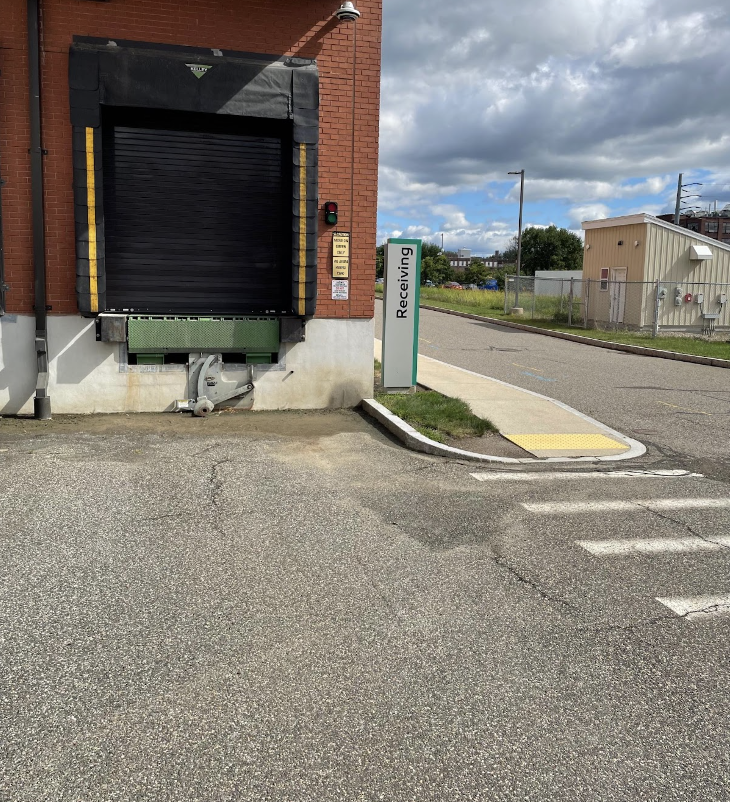
What is the height of the loading dock?
The loading dock accepts tractor-trailers and box trucks with a minimum height of 48 inches from the ground to the inside bed of the vehicle.
What is the maximum trailer length the site can accommodate?
The facility can accept tractor-trailers up to 53 ft in length.
Is there a space to turn around?
You can back in from Bigelow Street to be parallel with the back of the building and then turn right or left onto Bigelow Street.
Does MGHPCC have a forklift?
The facility does not have a forklift.
What are the hours for shipping and receiving?
Normal hours are 9:00 AM – 5:00 PM Mon-Fri.
Does MGHPCC supply pallets, boxes, and packing supplies for outbound shipments?
The facility does not supply packing materials. However, at times there are left-over pallets, boxes, and packing materials from incoming shipments that we make available on a first-come, first-serve basis. If you need this material, send a request to
Will MGHPCC palletize or pack outbound shipments for me?
Assistance is provided when possible, but senders have primary responsibility for packing.
How long can items be left on the loading dock for outbound shipment?
Items for outbound shipment should not be left on the loading dock for longer than two weeks due to limited space.
Are there special security requirements for drivers
There are no security requirements for drivers, as long as they stay in the loading dock area.
If a driver is bringing equipment into the facility, they must be escorted or be authorized for access to the facility by your security manager or administrator.
Are there special paperwork requirements for outbound shipments?
For outbound shipments please supply us with prepaid shipping labels.
If the shipment is palletized we will also need a Bill of Lading.
What happens if a package arrives damaged?
Efforts will be made to document and photograph the damage for review.